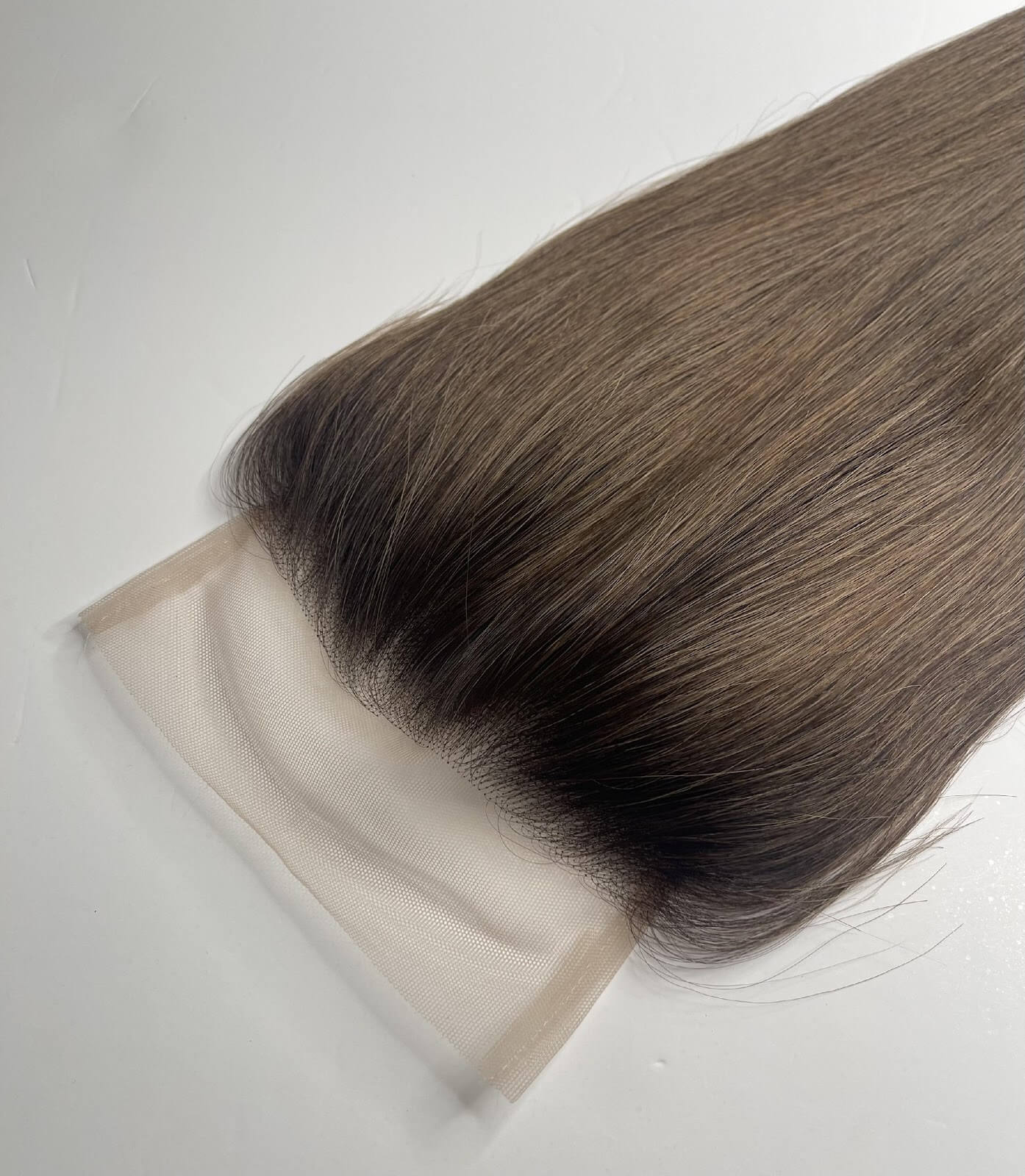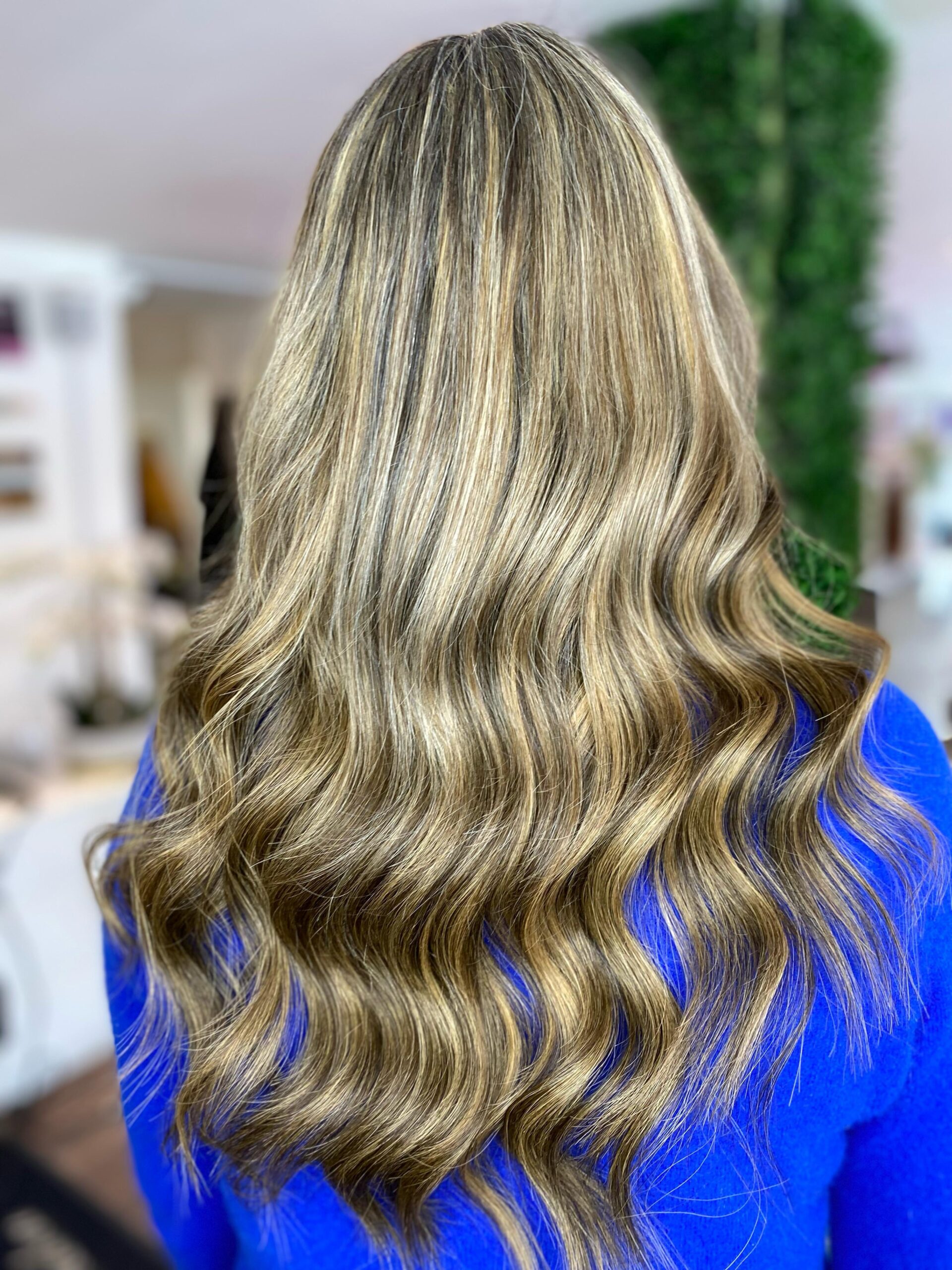
When it comes to hair extensions, closures are essential components that help achieve a natural and seamless look. They are used to cover the crown area of the head, and can also be referred to as Crown Volumisers. Two popular types of closures are silk-based closures and lace closures. In this article, we will explore the differences between the two types of closures.
Silk-Based Closures
Silk-based closures are made from a silk material that mimics the look and feel of a natural scalp. The silk material used for these closures is usually thicker and heavier than lace, which makes them sturdier and less likely to tear or break. Silk closures come in a variety of sizes, shapes, and colours to match different skin tones and hairstyles.
One of the significant advantages of silk closures is that they offer a more realistic and natural look than lace closures. The silk material has a similar texture and appearance to the scalp, which makes it blend in seamlessly with the natural hairline. Silk closures also have a longer lifespan compared to lace closures, as they are less prone to damage and can withstand more heat styling and chemical treatments.
Silk closures are also easier to install and maintain than lace closures. Since they are thicker and more opaque than lace closures, they do not require as much customization or additional layers of fabric to create a natural-looking hairline.
However, there are some downsides to silk closures. One of the main disadvantages is that they can be more expensive than lace closures due to the higher quality materials and craftsmanship required to make them. Also silk closures also tend to be slightly heavier than lace closures.
Lace Closures
Lace closures are made from a thin, delicate lace material that is virtually invisible when placed against the scalp. The lace material is typically hand-sewn onto a mesh or netting base, which is then attached to the hair extensions. Lace closures come in various sizes, shapes, and colours to match different skin tones and hairstyles.
One of the main advantages of lace closures is that they provide a more breathable and lightweight option than silk closures. The lace material allows air to circulate freely, which makes them more comfortable to wear for extended periods. Lace closures also offer a more versatile and customizable option than silk closures, as they can be easily tinted, bleached, or customized to match the wearer’s natural scalp colour and hairline.
Another advantage of lace closures is that they provide a more natural-looking hairline than silk closures. The lace material is virtually undetectable against the scalp, which makes it easier to create a natural-looking hairline that blends seamlessly with the wearer’s natural hair, like natural hair.
However, lace closures do have some disadvantages. One of the main disadvantages is that they are more fragile and prone to tearing or damage than silk closures. Lace closures require more care and attention to maintain their integrity and avoid breakage. Lace closures also require more customization and additional layers of fabric to create a natural-looking hairline, which can be time-consuming and require additional expertise.
In conclusion, both silk-based closures and lace closures have their advantages and disadvantages. Silk closures offer a more realistic and durable option, while lace closures provide a more breathable and versatile option. Ultimately, the choice between the two types of closures depends on the wearer’s individual needs, preferences, and budget. With proper care and maintenance, both silk-based closures and lace closures can provide a natural and seamless look that enhances the wearer’s overall appearance.


